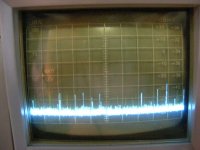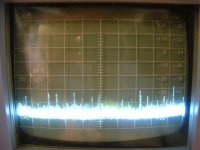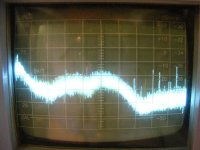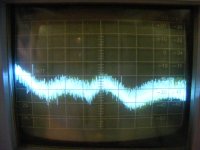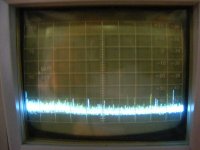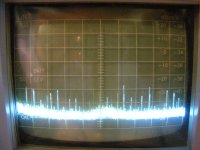....
A fascinating career. Karl von Terzaghi - Wikipedia, the free encyclopedia
"In 1928, Terzaghi was finally fed up with MIT and its president, and determined to return to Europe."
No. Sound.
Rugged output is needed for EMI immunity and minimizing cable influences. Most of the reviewer's objections to JC 3 sound apply to sound of the link level unbuffered opamp output stage. It is up to John if he believes or not, he might recall another hesitation he had some 40 years ago. This is similar, just different issue.
Is the opamp output isolated from the load with a series resistor of 50 to 100 Ohms? Hanging a few feet of cable on an op amp without taking this normally recommended precaution often causes problems.
Other possible issue is class B output stage- easily cured though by pre - loading the output.
No. Sound.
Rugged output is needed for EMI immunity and minimizing cable influences. Most of the reviewer's objections to JC 3 sound apply to sound of the link level unbuffered opamp output stage. It is up to John if he believes or not, he might recall another hesitation he had some 40 years ago. This is similar, just different issue.
Wow, talk about speculation! Like there is not a million other things that could account for a reviewers subjective opinion.
As I recall the JC-3 compared very well against the mega buck competition it was up against and was called an overachiever at it's price point.
Most designers put some resistance at the output of an IC or even discrete output stage to take care of reactance to cables. I don't think there is any merit to your attacks on JC's design.
Sounds like sour grapes to me.
There's differentiation in metaphysics?
Hell if I know. Metaphysics is an m-word, so I thought I'd take a stab at it. 😀
se
Metaphysics is an m-word, so I thought I'd take a stab at it. 😀
That's what Brutus said to Caeser.
Sounds like sour grapes to me.
Or market positioning. One needs to differentiate when competing against established brands, whether or not the differentiation is relevant.
Or market positioning. One needs to differentiate when competing against established brands, whether or not the differentiation is relevant.
Oh, THAT m-word.
Sorry for being so slow on the uptake. Need to get my cynicism over to the shop. It's way overdue for a tuneup.
se
Thank you JohnloudB. I think you are correct. For the record, there is a 100 ohm resistor at each output. There is also provision for a current offset using a fet to the negative supply. Looking again at the schematic, I can't find any problem.
Looking again at the schematic, I can't find any problem.
It's the distortion at 10 volts into 600 ohms that's the problem, John. Don't you know most folks use their phono preamps to drive headphones these days?
se
The point is about this phono design is that it is designed as well as a Blowtorch by the same people, but size restraints limited it to using IC's in the gain path from the get-go. If it was possible for me to make a 'perfect' phono preamp from IC's, this should have done it. Everything else was the same level of quality and construction as the JC-1 or the JC-2 in the series.
Since I found that each input IC had its own sonic signature, I am open for suggestions. Perhaps there are better IC's out there that would retrofit and sound even better (that is, if you believe that anything can really sound better than anything else).
Since I found that each input IC had its own sonic signature, I am open for suggestions. Perhaps there are better IC's out there that would retrofit and sound even better (that is, if you believe that anything can really sound better than anything else).
The point is about this phono design is that it is designed as well as a Blowtorch by the same people, but size restraints limited it to using IC's in the gain path from the get-go. If it was possible for me to make a 'perfect' phono preamp from IC's, this should have done it. Everything else was the same level of quality and construction as the JC-1 or the JC-2 in the series.
Since I found that each input IC had its own sonic signature, I am open for suggestions. Perhaps there are better IC's out there that would retrofit and sound even better (that is, if you believe that anything can really sound better than anything else).
How can we suggest better ICs if we don' t know what kind of ICs are used in the JC3?
How can we suggest better ICs if we don' t know what kind of ICs are used in the JC3?
Or the circuit, for that matter? I'm no expert on opamp circuit design, but what small experience I have suggests that a circuit optimized for Opamp A will generally not be optimum for Opamp B.
Just give me your 'faves' either single or dual, fet or bipolar input. 1'st stage single bipolar input, second stage dual fet input.
This is not necessarily so. Usually low noise bipolar input op amps are designed to be loaded with a fairly low impedance, because of the low value resistors necessary to keep the op amp quiet and useful. The second stage fet input usually has reasonably high peak current output. This is because OP AMPS are 'universal' as best as they can be.
Well I just did some power supply tests.
One test was just how much noise was present on the 12v dual coil toroidal transformer with no added noise.
The second was with my noise generator turned on.
The third was the noise filtered by a 4700/50 capacitor with the center tap grounded.
The fourth was using a full bridge and the negative side grounded.
The fifth added a small ceramic bypass to the 4700/50 capacitor.
The sixth had no extra bypass on the filter capacitor but did add bypasses across each of the diodes in the bridge.
Now try to guess which is which before you mouse over the image and have the label give you the answer!
ES
One test was just how much noise was present on the 12v dual coil toroidal transformer with no added noise.
The second was with my noise generator turned on.
The third was the noise filtered by a 4700/50 capacitor with the center tap grounded.
The fourth was using a full bridge and the negative side grounded.
The fifth added a small ceramic bypass to the 4700/50 capacitor.
The sixth had no extra bypass on the filter capacitor but did add bypasses across each of the diodes in the bridge.
Now try to guess which is which before you mouse over the image and have the label give you the answer!
ES
Attachments
- Status
- Not open for further replies.
- Home
- Member Areas
- The Lounge
- John Curl's Blowtorch preamplifier part II
